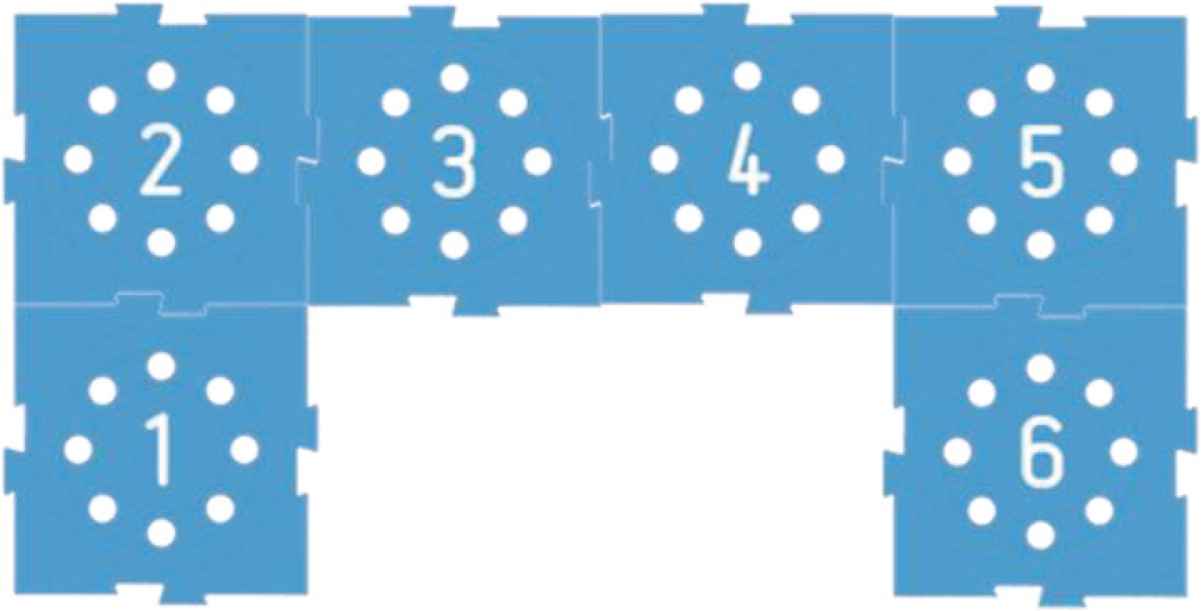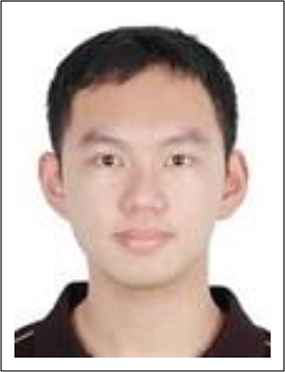Big Data and AI Approach for Body and Brain Test for Seniors
- DOI
- 10.2991/jrnal.k.200222.007How to use a DOI?
- Keywords
- Playware; Moto Tiles; Big Data; AI
- Abstract
We developed a Big Data and AI approach for the screening and early detection of health risks among seniors. The approach is based on seniors performing playful activities on the Moto Tiles. The activities are organized in a Body & Brain Age Test, which is composed on four games of 30 s each on the Moto Tiles. A whole population of individuals take the Body & Brain Age Test, and the performance data is collected for each game in the test. The Big Data approach allows the system to identify the nominal score for each age. The system can automatically generate a personalized training protocol based on the score in the Body & Brain Age Test. This is done by using the performance score to identify which physical and/or cognitive abilities are in need of training, and then generate a protocol based on Moto Tiles games, which tend to increase those particular skills as verified in clinical effect studies. The suitability of the method was tested in a small effect test with seniors with mild dementia at a care institution in Denmark. The results show that the seniors with dementia who were screened to be at high risk of falling, within the short period of training with the automatically generated personalized protocol increased their skills to no longer be at risk of falling.
- Copyright
- © 2020 The Authors. Published by Atlantis Press SARL.
- Open Access
- This is an open access article distributed under the CC BY-NC 4.0 license (http://creativecommons.org/licenses/by-nc/4.0/).
1. INTRODUCTION
There is a demographic change ongoing in which most countries worldwide is getting a population composition with more and more senior citizens. In Japan in 2016, 27.3% of the population was aged over 65 years old [1], and in the developed countries, in 2020 most of the developed countries already have 19–27% of their population being seniors [2]. The extended lifespan of the population is very positive for the individual, especially if it results in expansion of the healthy life years. On the other hand, the societies are met with the challenge that the population as a whole face many more chronical disease cases, and this may become a major economical challenge in the near future as the demographic change is resulting in even larger percentage of the population becoming seniors. Some of the most common health issues, which will increase with the increased number of seniors include falls-related injuries, stroke, dementia, hypertension, coronary heart disease, osteoarthritis, and type 2 diabetes. If we would be able to help seniors easily identify health risks and act to minimize these health risks, we may be able to ensure a longer healthy life period, and at the same time dramatically decrease the society expenses.
A new approach combining several disciplines may help confronting this challenge. These disciplines include playware, Big Data, and AI. Playware is defined as intelligent hardware and software that mediates playful actions among users of all ages [3,4]. Play is a free and voluntary activity that people engage in for no other purpose than play itself and for the enjoyment that it brings. Hence, play is based on intrinsic motivation, and precisely the intrinsic motivation may be crucial in the area of health to bring individual intrinsic motivation to perform actions of benefit for the individual health. As an example of such playware for health, the Moto Tiles [5] were developed to allow people to perform playful health actions. The Moto Tiles are proved to significantly improve the balance of older adults with less training period than ordinary training [6–8]. Also, Liu et al. [9] presented a Moto Tiles training with focus on combined physical and cognitive gaming, which could enhance cognitive abilities such as the reaction speed of the seniors.
Further, Big Data was developed as an approach to collect massive data and find patterns in the data. This may allow us to use Big Data to develop an AI expert system, which can recognize patterns in the data which we collect. For instance, this could be health patterns of the population and the individual. Here, we will combine the playware as a health technology with Big Data and AI. This will provide a system, which can screen for specific health related challenges for the individual senior, i.e. which physical and cognitive skills are underperforming, and at the same time automatically generate a personalized playful training for the individual to improve on those identified challenges.
2. BIG DATA APPROACH FOR BODY & BRAIN AGE TEST
We developed a Moto Tiles Body & Brain Age Test based on four Moto Tiles games, each evaluating some body or brain abilities (see Liu et al. [10] for further details). The games are Color Race, Special One, Final Countdown, and Remember (Simon Says in a newer version), and each lasts for 30 s making the test last for just 2 min in total. The physical layout of the Moto Tiles is six tiles in a horseshoe shape as shown in Figure 1.

The Moto Tiles layout for the Body & Brain Age Test.
Expanding on the approach from Liu et al. [10], using a Big Data approach, we collected data from 379 individuals aged 4–97 and analyzed the data. As an example, the collected data from the Moto Tiles Body & Brain Test can be visualized as in Figure 2 for the four test games.

The age-score model.
We analyse the data to obtain the normative scores of different ages, e.g. as the average score in a game for each particular age, or by polynomial fitting using the procedure described in Liu et al. [10]. The line in Figure 2 shows the polynomial fitting for each of the four games in the Moto Tiles Body & Brain Test.
3. FALLS RISK SCREENING
Previous work (Liu et al. [11]) has shown that there is a strong correlation between Moto Tiles game tests and standard health tests such as Timed Up & Go (TUG) [12], Chair Stand (CS) [13], and Four Square Step Test (FSST) [14]. The TUG test measures the time that a subject takes to rise from a chair, walk three meters, turn around, walk back to the chair, and sit down. Typical cut point of the TUG test is 14 s [12]. The CS test measures the time that a subject takes to stand up from a chair and sit down five times. The cut point of the CS test for fall risk is 15 s [15]. In the FSST, subjects are required to step as fast as possible into each square with both feet in a sequence clockwise and counterclockwise. The cut point of the FSST for fall risk is 15 s [14].
Based on the data of the 51 participants (avg. 80.1 years old) who took both the Moto Tiles physical tests and Body & Brain Age Tests in Liu et al. [10,11] tests, we analyzed the correlation between their performances of the two tests, which is shown in Table 1. It can be seen that the Color Race game had strong correlations with the TUG and FSST (|rs| > 0.7), and the Special One game also had a strong correlation with the FSST. All the rest cases were moderate correlation.
| Correlation | Color Race | Special One | Final Countdown |
|---|---|---|---|
| TUG | −0.70611 | −0.60695 | −0.61745 |
| CS | −0.51659 | −0.42619 | −0.45566 |
| FSST | −0.80849 | −0.70577 | −0.65266 |
Spearman’s coefficients between the physical tests and the Moto Tile games
The cut points of the TUG, CS, and FSSTs for fall risk assessment are 14, 15, and 15 s respectively. Linear regression models of the games and tests were built in order to transfer the standardized cut points to the games. Table 2 shows the cut points of the three games calculated from the three tests. The results calculated from different physical tests are consistent with each other, which indicates a high reliability of the games. By taking the average of the results, we could recommend the following Moto Tiles game cut points: Color Race = 19; Special One = 13; Final Countdown = 20.
| Cut point | Color Race | Special One | Final Countdown |
|---|---|---|---|
| TUG | 19 (18.56) | 13 (12.58) | 20 (19.75) |
| CS | 19 (19.26) | 13 (12.92) | 20 (20.32) |
| FSST | 19 (18.69) | 13 (12.66) | 20 (19.81) |
The cut points of the Moto Tile games
With these correlations verified, the perspective of the Moto Tiles Body & Brain Age Test is that this test can be used as a screening of the population. In this case, with the correlation with the well-established cut-points for falls risk, the Moto Tiles Body & Brain Test is a valid detector of fall risks. In this case, the scoring in the Moto Tiles games Color Race < 19 points, or Special One < 13 points, or Final Countdown < 20 points indicates a high risk of multiple falls.
4. PHYSICAL AND COGNITIVE ABILITIES
After being able to perform test and risk analysis with the Moto Tiles Body & Brain Age Test, it is possible to develop a system, which automatically recommend and generates personalized training protocols.
Firstly, the age-score model is integrated into the Moto Tiles Body & Brain Age Test app, which allows users to compare their scores with the normative score at their age. The comparison result is presented as a percentage difference as follows:
In the Moto Tiles Body & Brain Age Test, four games are used and the test results are presented as a spider web with seven abilities (physical and cognitive abilities). Based on the relation between the abilities and the games, the ability scores (0–100) are calculated as follows:
The algorithm maps the normative values to 80 points. Note that the endurance score is not calculated from the age-score model. Instead it measures if a player performs worse at the end of the game (23–30 s) than at the beginning (2–9 s) of the game.
5. AUTOMATICALLY GENERATED PERSONALIZED PROTOCOL
The personalized training protocol is generated based on the spider web (see Figure 3). Seven games are chosen for the protocol: Color Race, Special One, Final Countdown, Reach, Hit the Target, Simon Says, and Concentration. In order to choose appropriate games for the training protocol, each game is firstly assigned with a weight according to the spider web:

Screen-shot of the spider web showing the user’s score on the seven physical and cognitive abilities.
The weights of most games are associated with the sum of two abilities or a double of one ability, except for Color Race with four and Special One with three. This is because Color Race and Special One are two fundamental games which are relatively easy to be understood, and they therefore have more chance to appear in the training protocol.
Then the number of games N and total training time T are defined. In the first trial, N = 2 and T = 7 min. In later weeks of the training, N is raised to 3. The first N games with greatest weights are selected. The training lengths of the selected games are calculated as below:
6. DISCUSSION
It is interesting that the Moto Tiles game can be a consistent and robust health test for the seniors as is shown with the cut-points for falls risks. Consistent with standard health tests correlation, it is observed that scoring Color Race < 19 points, or Special One < 13 points, or Final Countdown < 20 points indicates a high risk of multiple falls.
This means that just by seniors playing and having fun on the Moto Tiles, it is possible to automatically at the same time obtain an indication of their health status and their risk of falls. Further, other scientific effect studies show how balancing skills are improved dramatically while playing on the Moto Tiles, so the Moto Tiles system also presents a tool to lower such risk of falls by playing certain games on the Moto Tiles.
Additionally, the health tests may show other indications. For instance, FSST times of 11 s are able to differentiate between persons with chronic stroke and healthy adults older than 50 years, so this can also be recognized simply by playing on the Moto Tiles. Also, TUG is a predictor for global mortality (also after presence of cardiovascular disease was taken into account).
This suggests that different cut-off points in the Moto Tiles games can be used to show various health related issues (diagnoses) when people are simply playing the games and are having fun.
CONFLICTS OF INTEREST
The authors declare they have no conflicts of interest.
AUTHORS INTRODUCTION
Prof. Henrik Hautop Lund
 He is a professor of Center for Playware, Technical University of Denmark. He is World Champion in RoboCup Humanoids Freestyle 2002 and has more than 200 scientific publications and 5000 citations. He was awarded the Most Outstanding Healthcare Innovator in the World in 2019. Over the last year, he received international awards in Tokyo, Singapore, and London. He has developed shape-shifting modular robots, presented to the emperor of Japan, and has collaborated closely on robotics and AI with companies like LEGO, Kompan, BandaiNamco, Microsoft, Mizuno. He is the inventor of the Moto Tiles (www.moto-tiles.com), which are used by seniors all around the world.
He is a professor of Center for Playware, Technical University of Denmark. He is World Champion in RoboCup Humanoids Freestyle 2002 and has more than 200 scientific publications and 5000 citations. He was awarded the Most Outstanding Healthcare Innovator in the World in 2019. Over the last year, he received international awards in Tokyo, Singapore, and London. He has developed shape-shifting modular robots, presented to the emperor of Japan, and has collaborated closely on robotics and AI with companies like LEGO, Kompan, BandaiNamco, Microsoft, Mizuno. He is the inventor of the Moto Tiles (www.moto-tiles.com), which are used by seniors all around the world.
Mr. Yan-Xin Liu
 He is a research assistant at Technical University of Denmark. He received his Master Engineering degree from Technical University of Denmark in 2018. He is currently pursuing his PhD at Department of Physics, Technical University of Denmark.
He is a research assistant at Technical University of Denmark. He received his Master Engineering degree from Technical University of Denmark in 2018. He is currently pursuing his PhD at Department of Physics, Technical University of Denmark.
Mr. Massimiliano Leggieri
 He is an Engineering Researcher at Center for Playware, Technical University of Denmark. He is specialized in Software Engineering and playware. He has developed apps such as the Music Tiles and Moto Tiles app, and has won several awards with the Moto Tiles development.
He is an Engineering Researcher at Center for Playware, Technical University of Denmark. He is specialized in Software Engineering and playware. He has developed apps such as the Music Tiles and Moto Tiles app, and has won several awards with the Moto Tiles development.
REFERENCES
Cite this article
TY - JOUR AU - Henrik Hautop Lund AU - Yan-Xin Liu AU - Massimiliano Leggieri PY - 2020 DA - 2020/02/29 TI - Big Data and AI Approach for Body and Brain Test for Seniors JO - Journal of Robotics, Networking and Artificial Life SP - 270 EP - 273 VL - 6 IS - 4 SN - 2352-6386 UR - https://doi.org/10.2991/jrnal.k.200222.007 DO - 10.2991/jrnal.k.200222.007 ID - Lund2020 ER -
